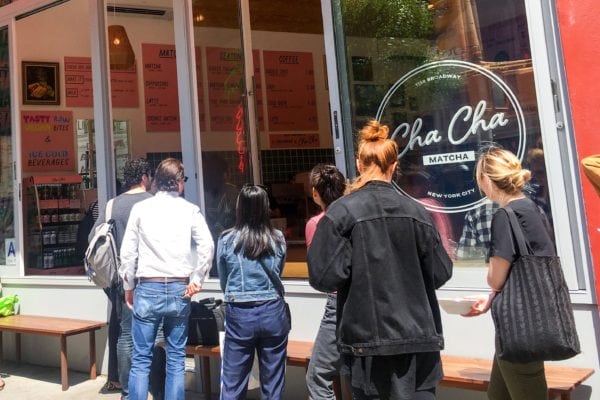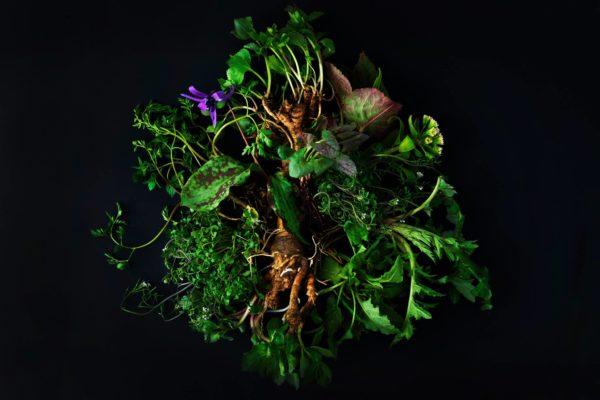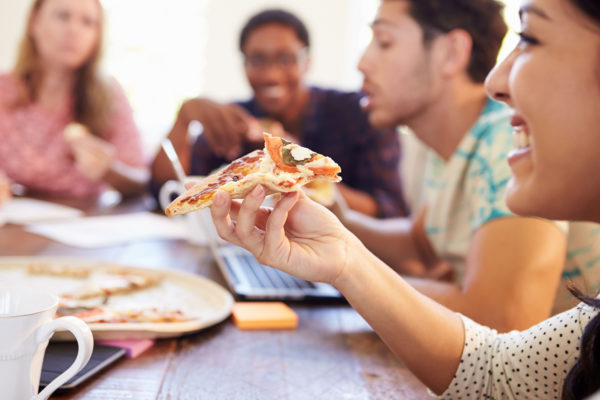PICTURES
The Future of Food, Mapped
This is awesome. “In June, I sat down to a dinner in San Francisco that couldn’t have taken place a decade ago,” the FastCo article begins. What follows is a map and explanation of the next ten years in food according to current trends. From vegetables sourced from a rooftop garden to preparation with the Kickstarter-darling Nomiku sous-vide, the dinner aimed to give diners a brief look into our “collective food future.”
The actual diagram focuses on categories of eating, shopping, production, distribution and manufacturing, including products like Soylent and Hampton Creek Foods’ Beyond Eggs, ideas like smart appliances and online grocery shopping, and hacks like precision coffee making and 3D-printed foods. It’s a great summary of the ideas, products and services currently available and a good jumping-off point of reference for what’s to come in the future. Great stuff.

DELIVERY
The Past and Present of Online Delivery Services
Food delivery startups. The media is still talking about them, investors are still investing, and consumers are using them with growing frequency. Their proliferation has been attributed to everything from growing tech-savvy to laziness, but in an era where 98 percent of Americans have access to an internet connection (citation), these services seem to be much more than just a trend.
The issue hit the New York Times today with a nod to the history of web-enabled delivery systems. In the early 2000s, “Web-enabled delivery was not a good business because it simply cost too much to build warehouses, manage an inventory and pay drivers. There was too little opportunity to recoup expenditures in delivery fees; people will pay only so much for toilet paper to be delivered before they decide to fetch it themselves.” The times, they’re changing!
The main difference between yesterday’s failures and today’s grand successes are that these companies — like Postmates or Instacart or Caviar — aren’t trying to become gigantic suppliers to the masses. Instead, they’re using digital technology to efficiently connect suppliers to customers. It’s that whole what-you-want-when-you-want-it thingI’ve written about before. This convenience does come with a cost, and that, according to the article, may be the biggest hurdle to a mass change in the way we shop. “On-demand delivery could create a two-tier economy — the people who can afford to hire others to do their errands and the people who do them.” Still, it’s hard to not see this sort of efficiency paired with elements of discovery as a positive move. Finding and purchasing directly from producers or small businesses, especially in the food world, is a positive trend worth exploring and supporting.
OPINION
How Google Glass Will Change the Way You Cook
What technology has the biggest potential in the kitchen today? According to food attorney and writer (sidenote: “Food attorney.” Cool.) Mary Beth Albright, it’s Google Glass. Her opinion piece in National Geographic’s Future of Food series explains why, from hands-free recipe searching to step-by-step instructions literally in your face.
It’s a good top-level look at why food enthusiasts and at-home cooks will like Glass, though it’s not much different fromwhat we’ve heard before. She does make the point that Google isn’t marketing the technology aggressively enough to these home cooks, focusing instead on “hipsters and foodies,” which is maybe true, but I don’t see the average in-home cook investing in a pair of these anytime soon. Regardless, though, the technology itself is exciting, and there’s certainly a place for it in today’s home kitchens. (Well, maybe after the next price drop.)
SRSLY?
A Portable Photo Studio for your Instagramming Pleasure
Ugh, can this please be satire? Apparently in South Africa there’s a brand-new way to be obnoxious at the restaurant table: the placemat-sized #DinnerCam — a portable photo station made for at-the-table food photos by amateur food photographers. Seriously. It recently launched at a Cape Town restaurant, where uploading the photo to your social networks with a hashtag earns you a free print of the photo. No word how the device is received by other diners at the restaurant who are trying to enjoy a relaxing meal.
SHOUTOUT
The MAD Symposium, aka #MAD4, takes over a circus tent in Copenhagen this weekend. Co-curated by Brazilian chef Alex Atala and Rene Redzepi + team, this year’s event features a series of presentations poised to answer the question: “What is Cooking?”
If previous years of this event are any indication, get ready for a lot of great ideas, great stories, and great experiences. The event promises to be accessible to anyone, even if you’re not physically present; follow MAD’s social channels for the immersive digital experience. (Twitter, Instagram, Facebook, Vimeo)
Digestifs
- Food “startup incubators” — NPR
- A good list of hot trends and big ideas in food and kitchen tech — CNBC
- The ice bucket challenge, restaurant edition — @momofuku +my favorite, Stephanie Izard — Chicagoist
- Vote! A great SXSW food+tech panel roundup — Food+Tech Connect




